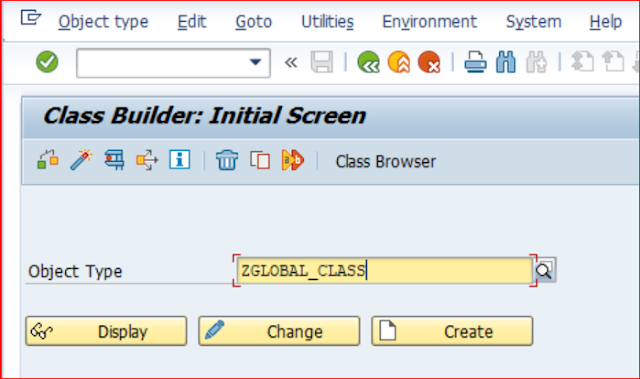HANA Eclipse Class
Introduction:
- We will cover the following basic concepts:
- How to create a Class in HANA Studio ( HANA Eclipse ).
- Basic components of the Class in the HANA Studio.
- How to create a simple program in the HANA Studio.
- Old VS New ABAP Syntaxes to call the Method of the Created Class.
1. Let us Create an Eclipse Class.
- Login to HANA Eclipse Studio and open the ABAP Perspective.
- File->New->Other..
- Select 'ABAP Class'.
- We can see the CLASS DEFINITION Section and CLASS IMPLEMENTATION Section generated as shown below.
- We are going to Define a method in the Public Section of Class Definition.
- And implement the Method in the Class implementation section as well.
2. Let us learn the Generated Default Components of the class.
4. We have created the program using Old syntax and New syntax as shown below.
- Line 1: CLASS CLASS_NAME DEFINITION:
- Here we define the components of the class.
- For Example Attributes, Methods Etc.
- Line 2: PUBLIC:
- This means the Class is a Global Class.
- Line 3:FINAL:
- This means the Class components cannot be inherited by a sub-class.
- In fact, there can be no sub-classes that can be derived from the final class.
- Line 4:CREATE PUBLIC:
- This defines the visibility of the class as an object.
- This means the class can be instantiated even outside the Class, in Other Classes, Sub-Classes & SE38 program using CREATE OBJECT. We will discuss more on this topic later.
- Line 5:PUBLIC SECTION:
- This defines the visibility of the components of the class.
- This means the class components like Attributes and Methods defined in this section are visible outside the Class, in Sub-Classes, in a SE38 Program. We will discuss more on this topic later.
- Line 6:METHODS: METHOD_NAME
- Here we have defined a method in the PUBLIC SECTION.
- PROTECTED SECTION:
- This means the class components like Attributes and Methods defined in this section are visible only to their Classes and in its Sub-Classes.
- PRIVATE SECTION:
- This means the class components like Attributes and Methods defined in this section are visible only to their Class.
- Line 14:CLASS CLASS_NAME IMPLEMENTATION:
- In this section, we implement all the required methods and utilize the Attributes inside the methods or externally in a Program based on visibility.
- Line 15:METHOD METHOD_NAME.
- Method Implementation.
3. Create a Program as shown below.
- File->New->Other->ABAP Program.
- Let us call the Instance Method of the created Class from the program as shown below.
- Old Syntax:
- Create a Reference Variable of the Class.
- Create an Object of the Class using the Reference Variable.
- Call the Instance Method of the Class.
- New Syntax:
- Single line to create both references Variable and Object of the Class.
- We use Inline Declaration i.e. DATA(LR_CLASS_REF_NEW) = NEW ZCLASS_ECLIPSE.
- Here, on the left-hand side of the assignment operator ( = ), we have an inline declaration.
- And on the right-hand side of the assignment operator ( = ), we have the class of interest and that will influence the REF TYPE of the LR_CLASS_REF_NEW variable.
- NEW: is an INSTANCE OPERATOR that will influence the creation of a NEW object of the CLASS ( ZCLASS_ECLIPSE) of interest.
- Inline Declaration happens at the time of program compilation, which results in Reference Parameter creation and Object is created once we execute the line i.e. DATA(LR_CLASS_REF_NEW) = NEW ZCLASS_ECLIPSE.
- Call the Instance Method of the Class.
- Execute the Program. Run->Run As->ABAP Application( Console ).
- Output in ABAP Console as shown below.
- Example Code:
*Old Syntax
DATA lr_class_ref_old TYPE REF TO zclass_eclipse.
CREATE OBJECT lr_class_ref_old.
CALL METHOD lr_class_ref_old->method( ).
WRITE:/.
*New Syntax
DATA(lr_class_ref_new) = NEW zclass_eclipse( ).
lr_class_ref_new->method( ).









Comments
Post a Comment